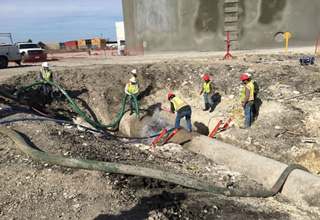Best Practices During Pipeline Shutdowns (Source: Civil + Structural Engineer)
By Justin Reeves, P.E.
If you work in water transmission systems, it is almost inevitable that at some point you will be designing or planning a system shutdown. This can be to establish a new system interconnection, conduct condition assessment on a pipeline, or rehabilitate a portion of the system. These are the points in the project that we intentionally put customers out of service temporarily in order to maintain or improve the system. Shutdowns are, without a doubt, necessary for maintenance, operation and growth, but they also are the times when planning and process are most important.
Any failed or prolonged shutdown can result in service interruption to customers, loss of revenue to the owner, additional construction costs, negative customer impacts and public relations nightmares. Accordingly, what can we, as professionals, design engineers, contractors and owners, do to mitigate some of these risks?
Design Approach
Prior to reviewing some best practices to improve your shutdown planning, it is important to understand the two major approaches to shutdown design. These are:
(1) A performance-driven, contractor-led construction solution; and,
(2) A technically driven, engineer-led design solution.
Both approaches require design and planning and both have their place in the industry.

